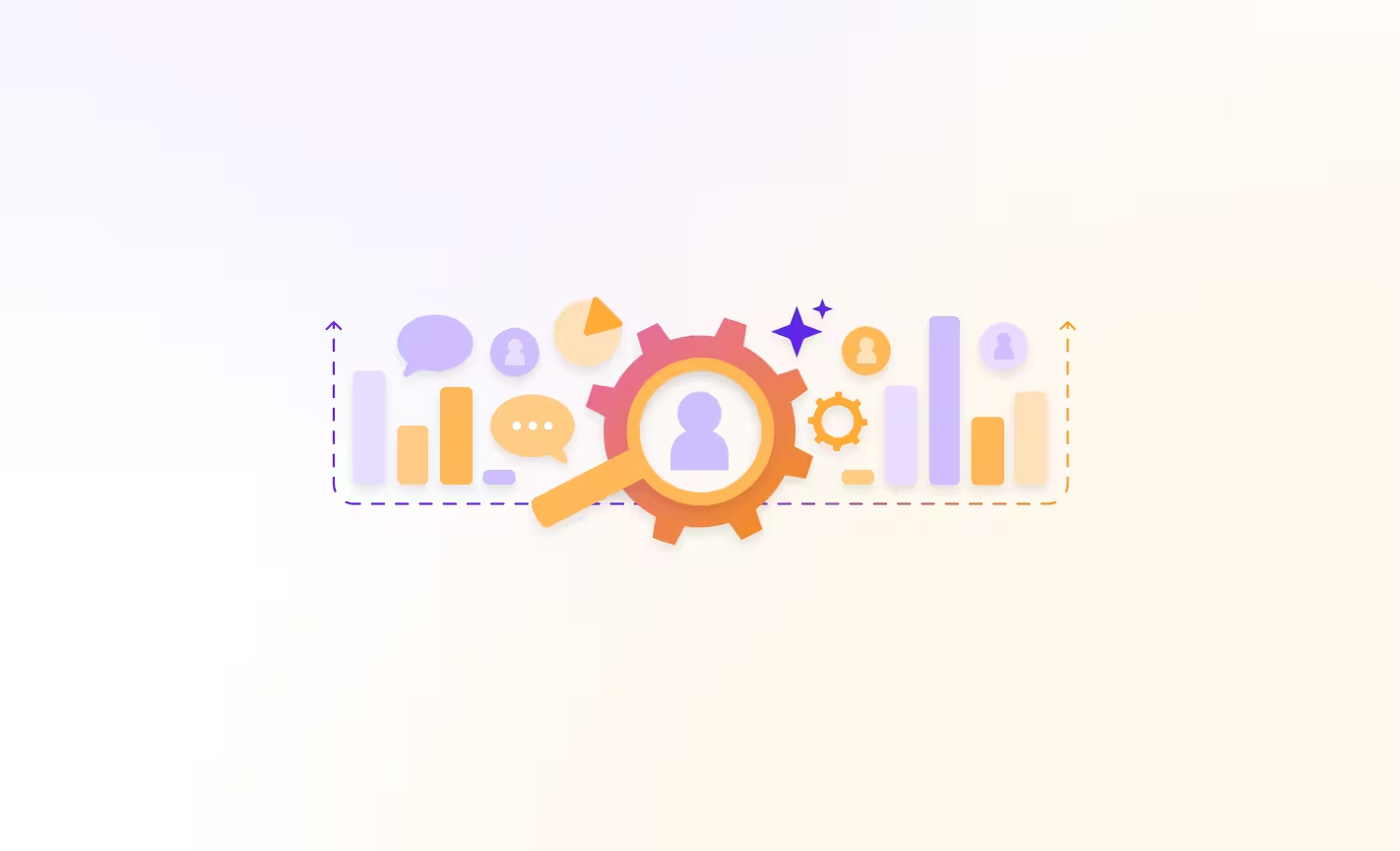Top recruiters excel at engaging with candidates, reading subtle cues, and building rapport—but they’re often not the best at maintaining data hygiene.
The focus on connecting with candidates and ensuring a great candidate experience during every interaction can lead to note-taking falling by the wayside, resulting in incomplete or inconsistent data in the ATS.
This can make it difficult for recruitment teams to get the full picture of a candidate, share insights, and ultimately, use the ATS to its full potential.
AI steps in to solve this by automatically capturing and consolidating information from multiple sources, like resumes, LinkedIn profiles, and interview transcripts.
With AI managing data quality, recruiters can stay focused on candidate interactions, confident that their ATS profiles are accurate, complete, and ready to drive better hiring decisions.
Why data quality in the ATS matters
The Applicant Tracking System is designed to be a reliable hub for candidate information, providing recruiters with a full view of each applicant’s qualifications, experience, and past interactions.
However, when data in the ATS is incomplete or inconsistent, it becomes less effective. Poor data quality means recruiters have to piece together candidate data from fragmented notes, making it difficult to assess candidates accurately or leverage past interactions.
Incomplete profiles and missed opportunities
When notes are sparse or poorly maintained, candidate profiles end up incomplete. This impacts more than just individual assessments; it affects long-term hiring strategy.
Inconsistent profiles mean that top candidates may be overlooked or poorly matched to roles, and recruiters may miss key insights that could lead to better hires. Furthermore, when candidate profiles are lacking or inconsistent, the ATS misses out on valuable data that could inform future candidate selection.
Recruiters often have to redo the search process for every new vacancy because the talent pool isn't properly built up or organized.
Past qualified candidates who may have been ideal for new roles get lost in the shuffle, making it harder to leverage historical data for proactive sourcing or faster recruitment.
Impact on collaboration and efficiency
Poor data hygiene doesn’t just affect individual recruiters; it also makes team collaboration difficult. When profiles lack critical information, handoffs between team members become cumbersome, and insights from previous interactions are often lost.
While for in-house recruiters this might not be seen as a huge problem, in agency recruitment, where multiple recruiters might be handling candidates for different roles or clients, this lack of data consistency can create significant inefficiencies.
Without a clear and comprehensive profile, different team members may end up reaching out to the same candidate multiple times or miss out on the right candidates who could be a great fit for new roles.
This can slow down the hiring process, prolonging the time-to-fill, creating frustration, and ultimately resulting in decision-making and missed opportunities for both candidates and clients.
How AI improves data quality in the ATS
AI tools are transforming the way recruiters manage candidate data, addressing key challenges in data hygiene and ensuring that the ATS becomes a truly reliable resource.
By automating data capture and enriching candidate profiles, artificial intelligence helps streamline the entire process, making the ATS more useful and the recruitment process more effective.
But how does this actually work in practice?
Automated data capture
One of the most time-consuming aspects of recruiting is capturing detailed notes during interviews.
AI technology can lighten this load by joining recruiters in meetings, automatically recording the conversations, transcribing the content, and identifying key points.
Rather than relying on recruiters to manually document every detail, AI algorithms can be trained to pull out essential information—such as candidate skills, experiences, and behavioral cues—and organize all candidate data into ATS-ready, structured, searchable data.
This ensures that no critical details are missed, even when recruiters are focused on the conversation.
Consolidating data from various sources
AI recruitment software doesn’t just rely on interview notes to build candidate profiles. It pulls data from a range of sources—resumes, LinkedIn profiles, past job applications, and even emails or chatbot interactions.
The power of AI lies in its ability to work with both structured and unstructured data - something that previous technology wasn’t able to do.
By consolidating this data, AI fills in gaps and ensures candidate profiles are comprehensive and up-to-date. With AI doing the heavy lifting, recruiters don’t have to waste time piecing together fragmented information, and the ATS becomes a complete, accurate snapshot of each candidate.
.avif)
Standardizing data for consistency
One of the challenges with manual note-taking is the variation in style and structure between different recruiters, as well as between them and hiring managers.
AI can solve this by standardizing the data, organizing notes, skills, qualifications, and experiences in a uniform format across all profiles.
Moreover, it can compare information from interviews and other data sources, surfacing inconsistencies in the application process—such as when a candidate's claims vary between sources.
This makes it easier to compare candidates, perform searches, and make decisions. Instead of trying to interpret different note formats or incomplete profiles, recruiters can quickly access clear, structured information that improves efficiency and accuracy in the hiring process.
With complete, consistent, and enriched candidate profiles, recruiters are better equipped to make informed, data-driven decisions faster, leading to a more effective and efficient recruitment process.
%252520(1).avif)
Practical example: Auto-filling the ATS with Carv
Now let’s look at a practical example, to make this more tangible.
Carv is an AI assistant designed to take over administrative tasks from recruiters, so they can focus on candidates and clients.
It does this by joining a recruiter’s meetings - be them face-to-face, virtual, or by phone - and handles the note-taking, turning key points into two types of outputs:
- Structured data, such as ATS-ready information
- Unstructured data, such as candidate profiles, job requirements documents, and so on.
Here’s how this works.
Data capturing and pre-formatting
Once a recruiter connects their calendar to Carv, the AI assistant can join the upcoming meetings, tailoring its note-taking and data capture to the type of meeting.
For example, during an intake call, Carv will automatically document the key requirements for the role, the specific needs of the hiring manager, and any other relevant details that will guide the search process.
At the end of an intake call, Carv will generate specific documents, such as job descriptions and intake reports, ready to use for job posting across job boards.
During interviews, Carv focuses on capturing candidate qualifications, behaviors, and responses to key questions. These meeting-specific outputs ensure that the right data is captured for each scenario, making it easier to reference and use later in the recruiting process.
After each interview, Carv creates a candidate profile and candidate presentation or write-up, ready to send to the hiring manager.
.avif)
Both the data for the ATS fields and the output documents Carv generates can be fully customized to match your team’s specific needs.
For example, if you prefer to pre-fill certain fields in the ATS using information from the interview, and cross-check that with data from the CV, Carv can do the resume parsing while extracting the data from the meeting. The information can be double-checked for consistency before being sent to the ATS.
Same goes for output documents - the structure and the tone of voice can be adjusted to fit your predefined templates, as well as your employer brand and recruiter style. Whether you prefer a formal tone or a more conversational approach, Carv adjusts its notes and summaries accordingly.
This flexibility in automation ensures that the generated documents not only reflect the key details but also align with your team's preferred communication style, making it easier to review and share candidate insights.
Autopopulating the ATS
Once Carv has captured and organized the relevant information, it automatically populates the ATS with this data, filling in candidate profiles with accurate and consistent details.
As mentioned, the fields in the ATS can be customized based on your team’s specific requirements, ensuring that the right data points are captured and categorized according to what’s most important to your recruitment process.
This eliminates the need for recruiters to manually enter data after every conversation, saving time and ensuring that the ATS is always up-to-date.
The Carv-ATS integration offers two different setup options:
- API-based integration, where the Carv AI assistant works as an independent, external tool, syncing information after each meeting.
- Embedded AI assistant, where Carv sits directly inside the ATS, allowing recruiters to access all the functionalities without needing to switch tools.
By streamlining the note-taking process, automating data entry, and offering customization options for both output formats and ATS fields, Carv ensures recruiters always have the full context of a candidate at their fingertips.
.avif)
Potential challenges with AI-driven ATS updates
As you can see, AI brings significant benefits to the recruitment process, helping recruiters work more efficiently and restoring the focus on human connections.
However, before implementing AI into your hiring workflows, it’s important to be aware of some common challenges associated with automated AI ATS updates.
Data privacy and compliance
AI-powered recruitment tools are still relatively new, and as they become more integrated into hiring processes, it’s crucial to address the potential risks related to data privacy and compliance.
With AI pulling and processing data from multiple sources, there are significant considerations regarding how that data is collected, stored, and shared.
AI tools must comply with data privacy regulations like the EU AI Act and GDPR in Europe, CCPA in California, and other region-specific laws. These regulations govern how personal data is collected, used, and protected, and failure to comply can result in substantial fines and damage to a company’s reputation.
Recruiters must ensure that proper consent is obtained from candidates for collecting and processing their data, particularly when sourcing information from public profiles or external platforms like LinkedIn.
Additionally, the data must be securely stored and handled, with safeguards in place to prevent unauthorized access or data breaches.
Incorporating AI into the recruitment process requires strict attention to these legal and ethical standards to ensure that both candidates’ rights and the company’s reputation are protected.
Monitoring AI accuracy
AI systems, while powerful, are not infallible. They rely on vast amounts of data, but there’s always the possibility of missing key details, misinterpreting context, or introducing errors.
This is why it’s essential to regularly monitor the accuracy of AI-driven outputs in the recruitment process.
For example, AI may overlook specific candidate qualifications or interpret answers from interviews in a way that doesn’t fully reflect a candidate’s skills or experience. Inconsistent or incomplete data can lead to candidate profiles that are misleading, which in turn affects hiring decisions.
To mitigate these risks, recruiters should actively validate the data generated by AI, ensuring that all key insights are captured correctly and that candidate profiles are complete.
AI systems can be fine-tuned over time. As more data is processed, the system can learn and adapt to reduce errors and improve its ability to capture relevant details. Regular feedback loops from recruiters help identify and address any inaccuracies, ensuring that the AI continues to perform at its best.
By keeping a close eye on AI outputs, recruiters can ensure that the system supports their efforts, rather than compromising them, and continuously improve its performance to better serve the recruitment process.
Over to you
AI has the potential to enhance the recruitment process by automating note-taking, consolidating information, and ensuring consistent, accurate candidate profiles in your ATS.
However, as with any new technology, it’s important to be mindful of challenges like data privacy and compliance. With the right balance of AI and human insight, your team can make more informed, data-driven decisions and enhance overall recruitment success.
If this sounds exciting and you’re ready to see how Carv can supercharge your ATS, book a demo below!
.avif)


.avif)




